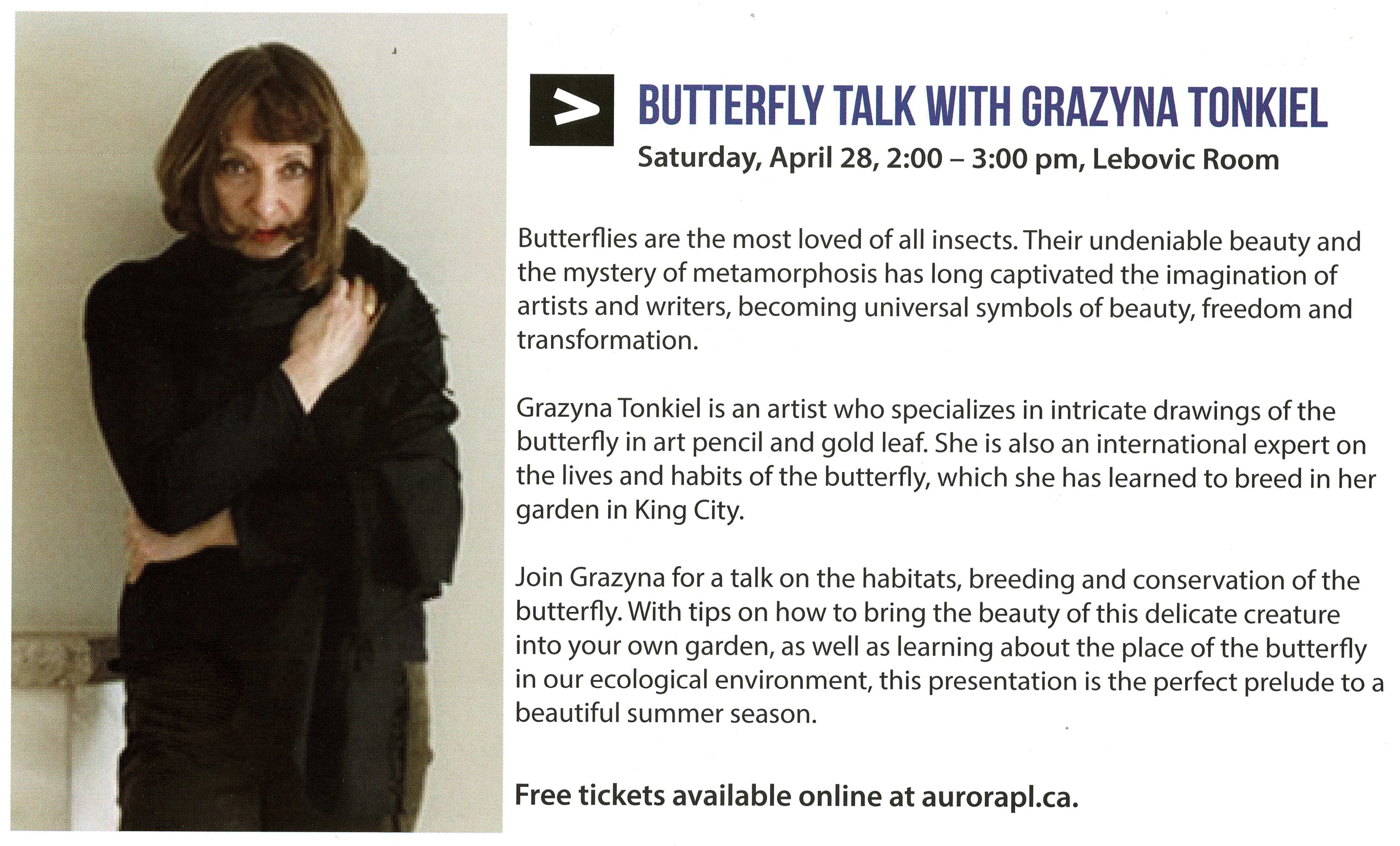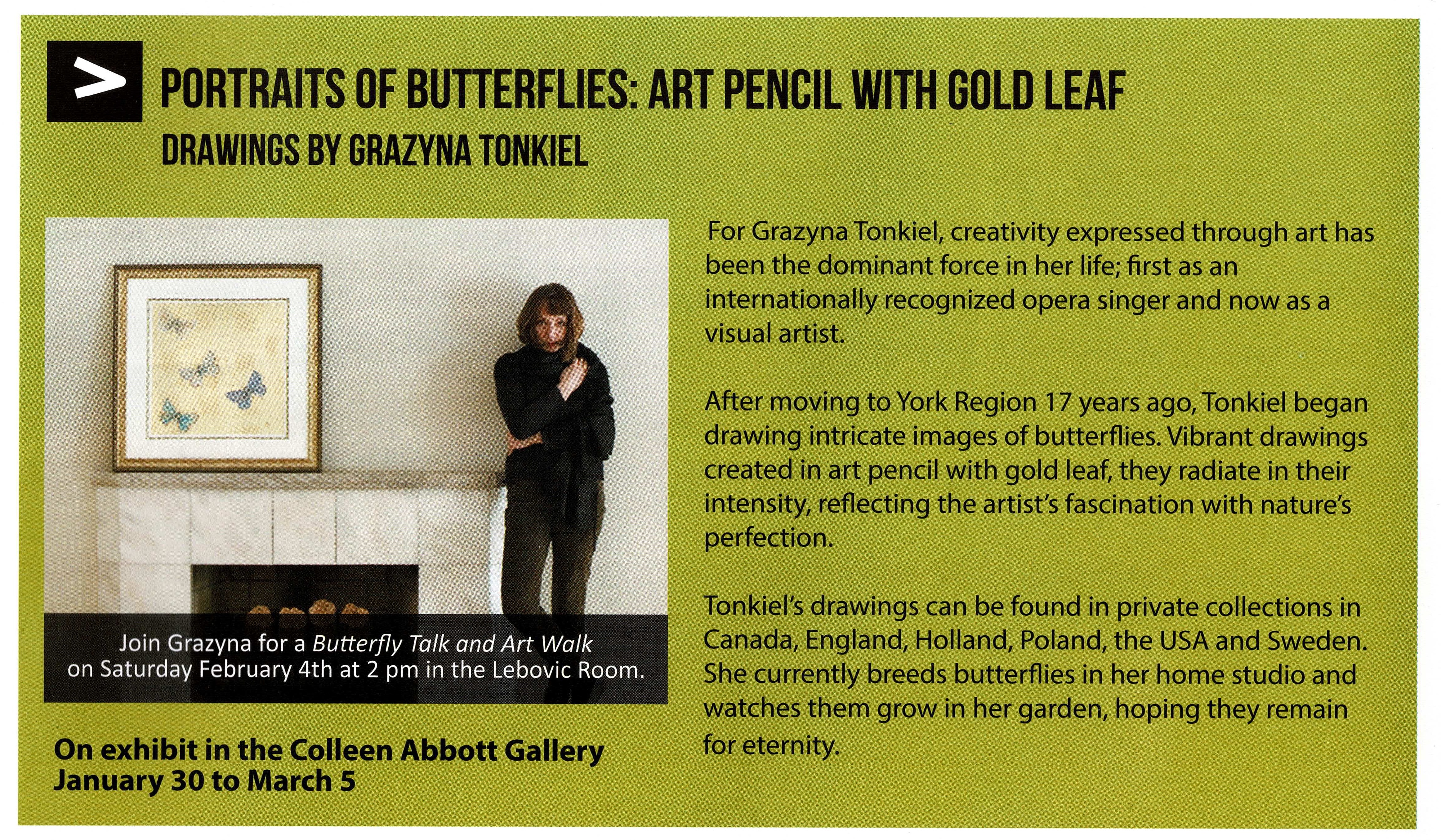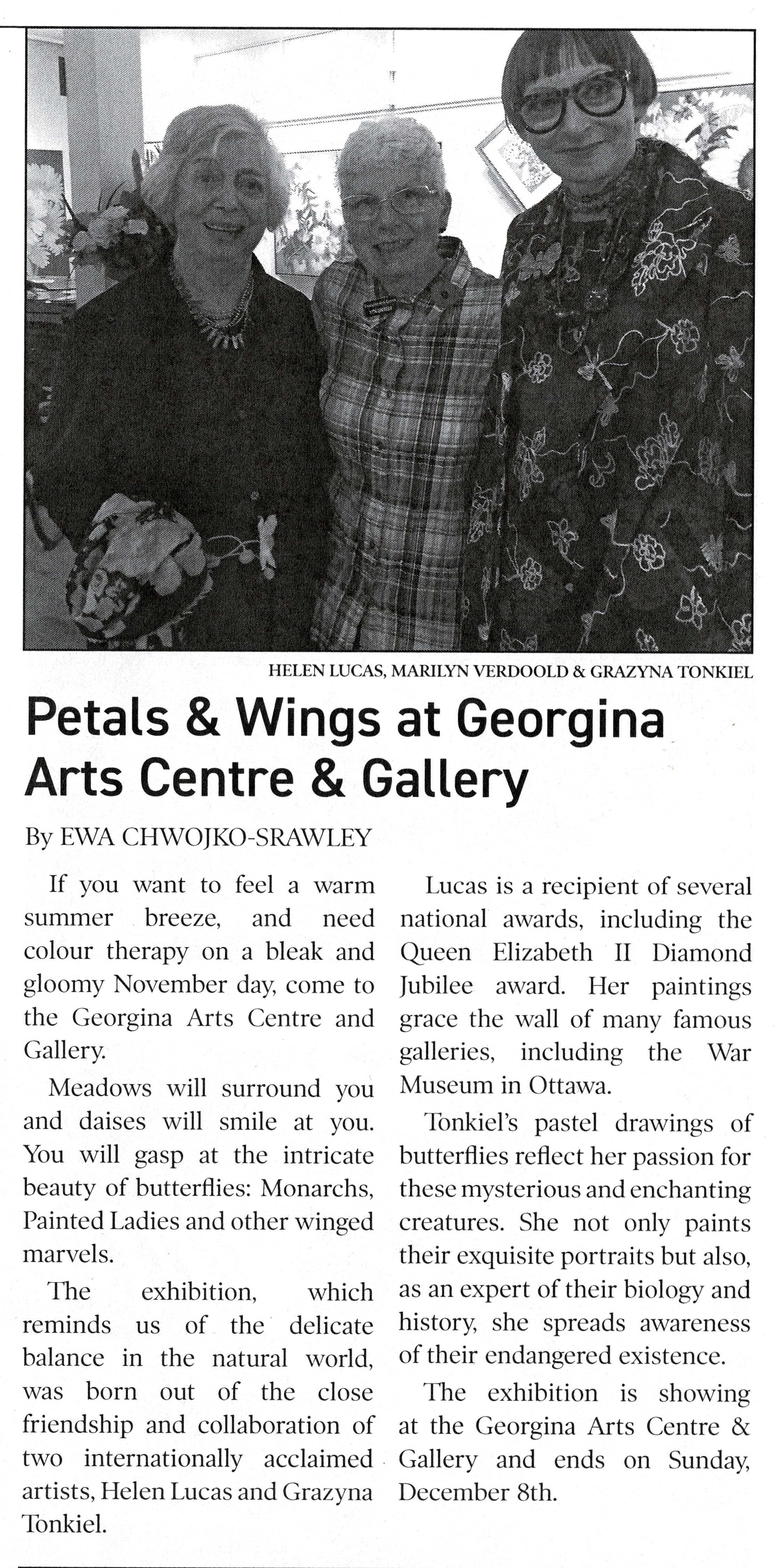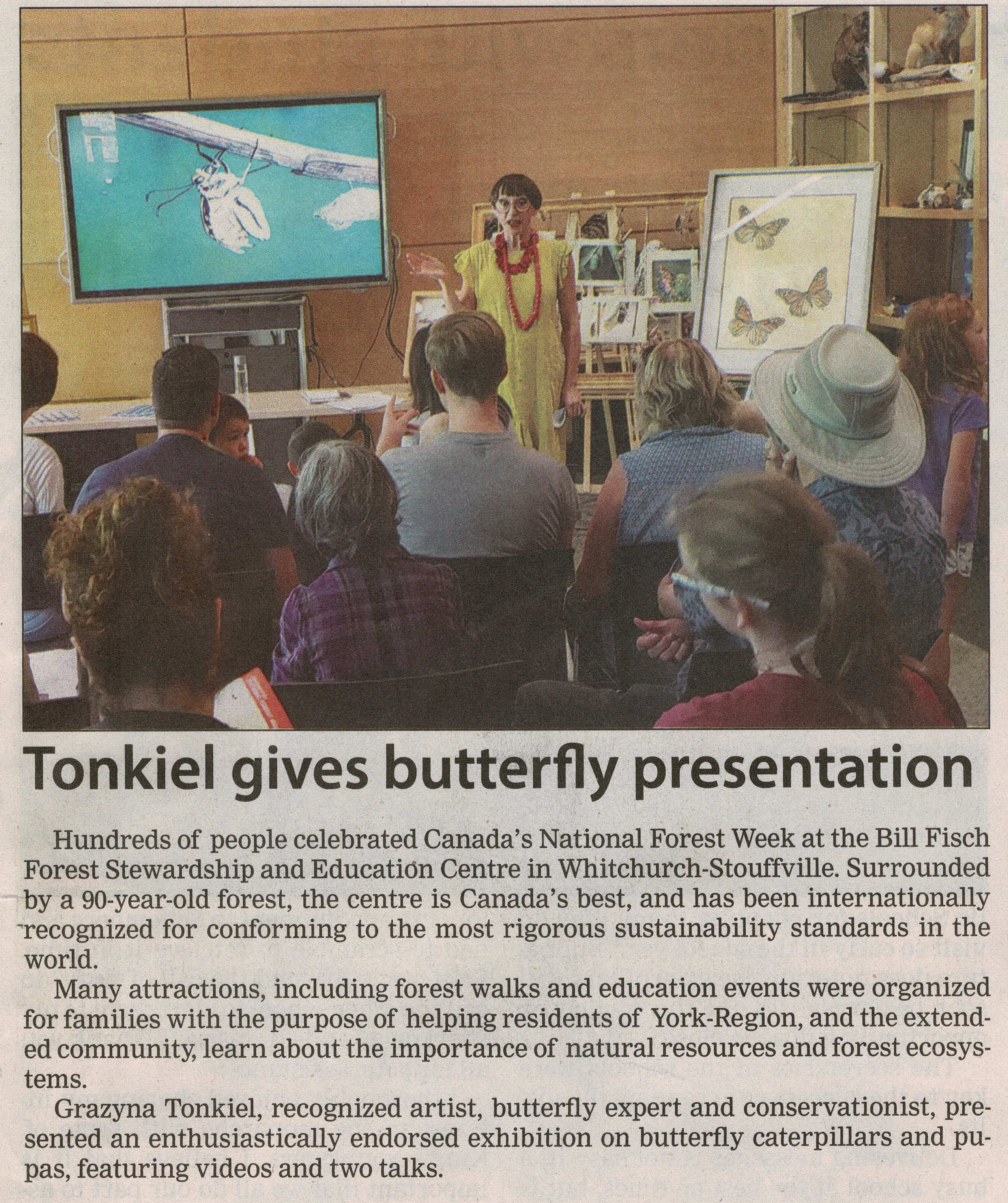We can all help restore Monarch habitats
By Grazyna Tonkiel
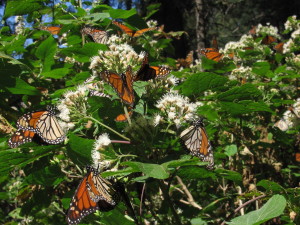
I'm very fond of my 50-year-old lilac bush. It grows on my property.
For many years, every spring I observed it with great anticipation.
It used to be the feeding ground for migrant Monarch butterflies arriving from the south.
When they arrived the magnificent kaleidoscope of Monarchs, 10 or more, gathered to quench their thirst and hunger on the lilac flowers – this was my summer treat. Not anymore!
This year, I was devastatingly disappointed. Not even one Monarch came … same as the previous year, in fact, for quite a few years now.
I clearly remember reading a warning article about the disappearance of Monarch butterflies.
It was in the year 2000. I immediately formed my little private “Monarch Rescue Society.” Every spring I collected Monarch caterpillars from local milkweed plants and helped them grow and mature.
Once ready to fly, I released them with the great hope that they would return the following year.
In nature, only 1% of the eggs laid by females survive and transform into butterflies, however, if you carefully shelter the eggs, the survival rate is almost 100%.
Over time I have raised and released quite a few Monarchs, but not anymore. Over the last three years I have not been able to find a single Monarch egg or caterpillar; Painted Ladies, Admirals or Swallowtails yes, but not Monarchs.
The problem is reflected in statistics.
In the last two decades we have lost 95% of the North American Monarch population. It decreased from 1 billion to only 54 million butterflies! We definitely need more than my little rescue society to help protect them from extinction.
There are many dangers that butterfly eggs, caterpillars, chrysalises and mature butterflies face.
Parasites like fly larvae, feed on the flesh of living caterpillars eventually killing them. There are three types of wasps that lay eggs directly into butterfly chrysalises and by doing so interrupting metamorphosis, or drag the chrysalises to their nests to feed their own larvae. Spiders, dragonflies, bats, birds are all highly effective caterpillar and butterfly predators.
But the biggest and the most dangerous threats come from mankind.
Deforestation, loss of habitat, poisoning via wide spread pollution, use of chemical pesticides and global climate change, all perilously impact Monarch and other butterfly populations.
It is also hard to control Monarch habitat and conservation efforts when three countries, Mexico, U.S. and Canada, each having their own specific problem, are involved.
Mexico is striving to control large scale illegal logging in the Central Mexican Highlands in State of Michoacan, where Monarch butterflies roost every winter on of Oyamel fir trees branches.
Carlos Slim-Helu, the Mexican telecommunications billionaire donated $50 million to Monarchs conservation, the largest single environmental philanthropic donation by a Mexican national. His donation was used to establish nurseries to raise and sell trees, reforest the region when providing people with economic alternative to logging and strengthening ecotourism.
The nurseries have been so successful that illegal logging in Monarch habitat areas has decreased drastically from 730 acres in 2004 to just 5 acres in 2014.
While Mexico is doing its part, herbicides like Monsanto Roundup are destroying milkweed plants in the U.S., the only plant Monarch caterpillar feed on, inevitably causing population decline.
For a long time, Canada was no better. We had milkweed on the notorious weed list. Not anymore! This is excellent. We have also established a few Monarch conservation habitats.
I am painting a gloomy picture, but we can change it. There is a way anyone of us can help.
How? By planting lots of suitable butterfly food plants in our gardens.
Please don't pull the milkweed if you see one of its plants on your lawn, let it grow for the summer. It has beautiful dense flowers, and when its seedpods mature and dry, they release the most fragile weightless seeds. I keep the dry plants, with partially opened pods, for decoration in my house. I love their fragile feather coated seeds hiding in their reptile-skin-like shell.
Grow late flowering plants like asters, tall sedum, zinnias, garden phlox, goldenrod, Joe-Pye weed, purple cone flower, they are best for butterflies. Your effort will make a real difference.
These plants are extremely rich in nectar, which Monarchs need to build up their abdominal fat reserves. They need that energy for the long journey to the Mexican mountains.
They are leaving now, miles from Canada to Mexico, flying on average at the speed 12 miles an hour, 50 miles a day.
This year only a few of them will make this trip. None will be mine. I wish them a safe flight and safe winter in the oyamel fir forest. I also hope, there will be no freezing rain in their nesting grounds in Mexico, and that they will avoid that climate change driven phenomena, which has killed millions of Monarchs in last few years.
To get you started growing milkweed, I want to offer, free of charge, seeds gathered last year. Everybody who wishes to plant beautiful milkweed, can get some seeds at my Butterfly Art Tent, during Schomberg Street Gallery.
Please visit me on Sept. 13 between 10 a.m. and 5 p.m. on the Main Street in Schomberg. I will be presenting my Butterfly Portraits drawings, and sharing the seeds.
Grazyna Tonkiel is an accomplished opera singer, visual artist and a conservationist. She was the soloist at Polish National Opera and Ballet Theater in Warsaw and won national and international vocal competitions, her butterfly studies are in collections in over 10 countries. She can be reached at her Gallery Solo studio in King City – www.gtonkiel.com.
|



